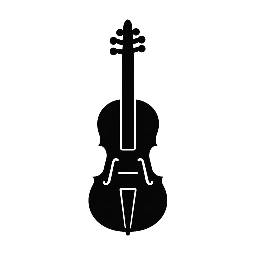About

About our Project
Projeto de Música do Porto 2025 will celebrate our rich heritage of music and dance through vibrant performances.
Our mission is to share the soulful melodies and traditional dances of this region, plus the Ladino songs that originated centuries ago amongst the Jews of Spain and Portugal.
Our aim is to promote cultural appreciation and community connection in Porto.
We are committed to promoting diversity, supporting artists, and creating unforgettable experiences that resonate beyond the stage.
Below we explain more about music:
Yiddish Music: A Journey Through Jewish Soul and Storytelling
Imagine a musical genre that carries centuries of history, emotion, and resilience—Yiddish music is exactly that. It’s the soundtrack of Ashkenazi Jewish life, mostly sung in Yiddish, a language that blends German, Hebrew, and Slavic influences. For young Portuguese listeners, think of it as a mix of fado’s soulfulness, folk storytelling, and theatrical flair.
What Is Yiddish Music?
Yiddish music isn’t just one style—it’s a rich tapestry of genres:
- Klezmer: Instrumental dance music originally played at Jewish weddings. It’s lively, emotional, and often features clarinet, violin, and accordion.
- Yiddish Folk Songs: These tell stories of love, hardship, migration, and everyday life in Jewish communities across Eastern Europe.
- Yiddish Theatre Songs: Popular in the early 20th century, these songs were part of musical plays and operettas, often humorous or dramatic.
- Yiddish Art Songs: Inspired by classical traditions like German Lieder, these are poetic and composed with serious musical intent.
- Enjoy!
Yiddish songs often explore:
Humor and satire, even in tough times
Longing and nostalgia (like fado)
Resistance and hope (especially during times of persecution)
Family, love, and community
Even though fewer people speak Yiddish now, the genre lives on through revivals, festivals, and academic programs. It’s a way to connect with a rich cultural heritage that celebrates identity, survival, and creativity.
If you’re into Fado, folk tales, or indie theater, Yiddish culture might feel surprisingly familiar.
Klezmer Music
🎻 A tradition that sings without words Klezmer music is a vibrant and emotional form of instrumental music traditionally associated with Ashkenazi Jews from Eastern Europe. Originally played by wandering musicians known as klezmorim, this music accompanied weddings, celebrations, and community rituals—with melodies that can laugh, cry, and dance all at once.
✨ Key characteristics
- Typical instrumentation: Clarinet, violin, accordion, double bass, and sometimes trumpet or piano. Each instrument contributes its own expressive voice.
- Emotional style: It shifts between infectious joy and deep melancholy, reflecting the soul of a resilient community.
- Scales and ornamentation: It uses modes like the freygish (similar to the Phrygian mode with a major third), giving it an exotic and captivating sound.
🌍 From the shtetl to the world—and to Portugal Though it has its roots in the Jewish villages (shtetls) of Poland, Ukraine, and Lithuania, klezmer has evolved to include modern influences like jazz, rock, and classical music.
In Portugal, this tradition will offer a sonic bridge between cultures, bringing the Porto audience a new way to experience music—with heart, body, and collective memory.
💃 Klezmer today Played at festivals, concert halls, and in the streets of Lisbon, Porto, and beyond, klezmer invites sharing, dancing, and deep listening. At taybelekh.org, we celebrate this music as a way to preserve and renew Jewish heritage in dialogue with the Portuguese-speaking world.
🧭 What Is Ladino?
Ladino (also called Judeo-Spanish) is a language born from medieval Spanish, spoken by Sephardic Jews after they left Portugal and Spain during the Inquisition. It carries echoes of Iberian culture, but evolved in places like the Ottoman Empire and North Africa.
Imagine if Portuguese folk music had a long-lost cousin who traveled the Mediterranean, picked up stories from Spain, Turkey, Morocco, and Greece, and sang them in a language that sounds like old Spanish mixed with Hebrew. That’s Ladino music—the soulful soundtrack of Sephardic Jews who were expelled from the Iberian Peninsula centuries ago.
🎵 Ladino Songs: Heartfelt and Timeless
- Themes: Love, longing, family, gossip, heartbreak, and hope. Many songs were sung by women while doing housework—intimate, personal, and poetic.Style: Think of it like a blend of Fado’s emotion, Flamenco’s rhythm, and Mediterranean flair.
- Instruments: Often minimal—sometimes just voice, sometimes with percussion, guitar, or oud
🌊 Songs That Travel
Some Ladino songs feel like ballads from a distant shore. For example:
These melodies have survived centuries, passed down orally, and now revived by artists like Sarah Aroeste and Nani Vazana, who blend tradition with modern sounds
So please come along to experience Taybelekh in concert this November – in Porto at Clube Fenianios
November 20 and 22
